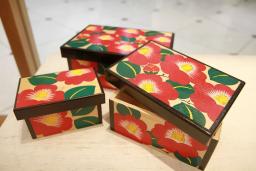Take home two cute traditional crafts as souvenirs from Kumamoto!
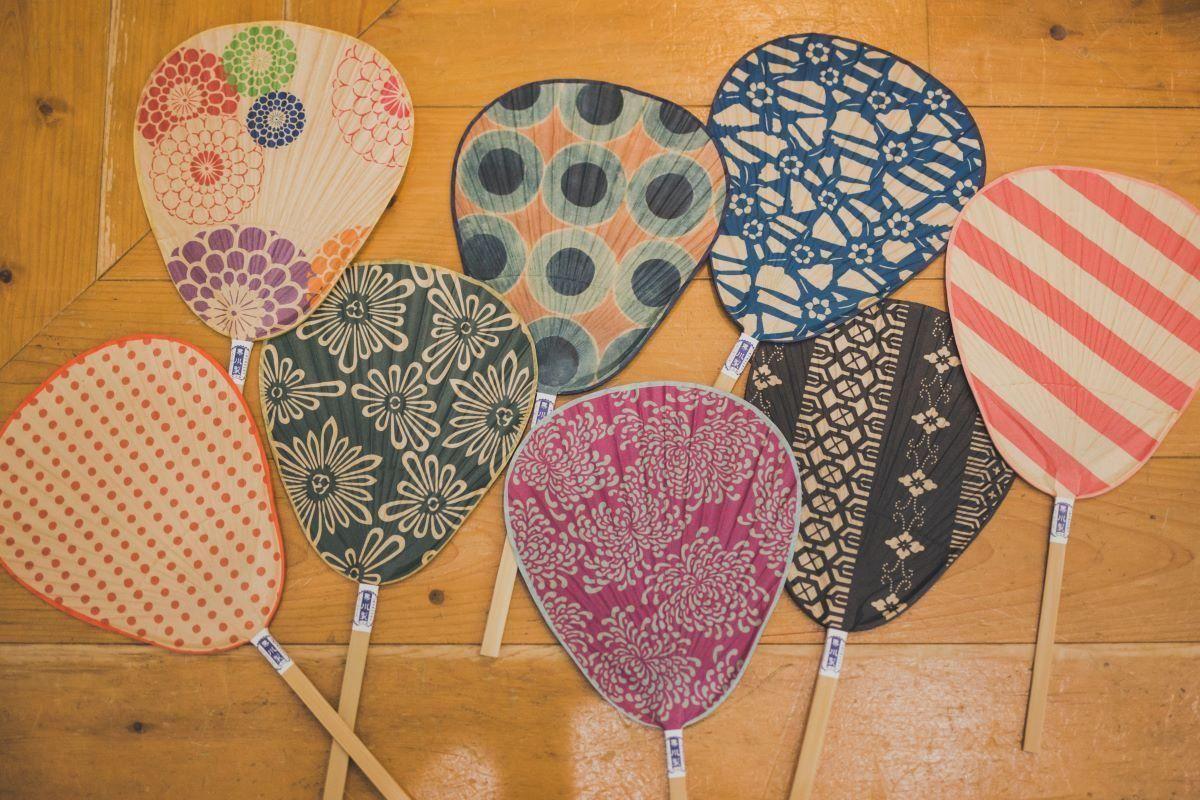
In Kumamoto, we have been making many crafts traditionally. Allow us to introduce to you some traditional crafts among them that look modern and cute, for you to purchase as souvenirs or for home interior decoration. These crafts that inherited traditional techniques with sophisticated designs that match the times will surely provide a lasting impression of your travel!
- Kutami Uchiwa Fans from Kurikawa Shoten (Yamaga City)
- Konohazaru from Konohazaru Kamamoto (Gyokuto Town)
Usable for 100 years, Kutami Shibu-Uchiwa fan from Kurikawa Shoten (Yamaga City) is a good luck charm with a variety of designs.
Kurikawa Shoten
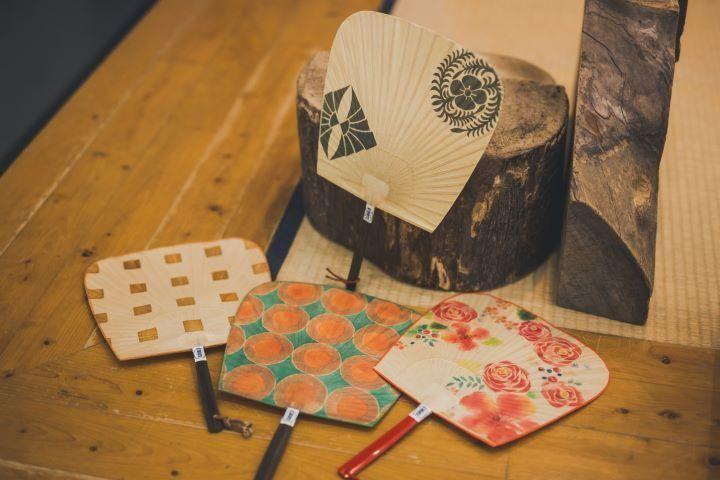
Yamaga City is located north of Kumamoto City. A bamboo fan called Kutami Shibu-Uchiwa has been made for more than 400 years in an area called Kamotomachi Kutami. Along with Kyoto and Marugame, the region was one of the three largest producers of Uchiwa fans. The technique has been passed down to this day and Kurikawa Shoten is one of the few workshops in Japan that handcrafts Uchiwa fans using only domestic materials such as bamboo and Japanese Washi paper.
The most distinctive feature of the Kutami Shibu-Uchiwa fan is that the Japanese Washi paper is coated and strengthened with persimmon tannin. The paper is then stretched over a frame made of giant timber bamboo, which is harvested nearby, and finished by hand one at a time. It is said that the quality of the Uchiwa fan, which many craftsmen spent much time and effort to make, will last for 100 years. To this end, they are also treasured as good luck charms for longevity and business prosperity and are becoming increasingly expensive as gifts such as “naming Uchiwa fans” with children’s names on them.
Additionally, recently, various designs painted by craftsmen have been gaining popularity for being adorable. These include colorful, modern, Japanese, and pop designs such as shaved ice and Kumamon. Amabie designed Uchiwa fans have also gained popularity during the COVID-19 pandemic. Keeping you cool in the hot summer and decorating your home in the winter, Kutami Shibu-Uchiwa fan will stay with you for life. Choose from a wide variety of colors, patterns, and shapes and get one of your likings as a gift for your loved ones or yourself.
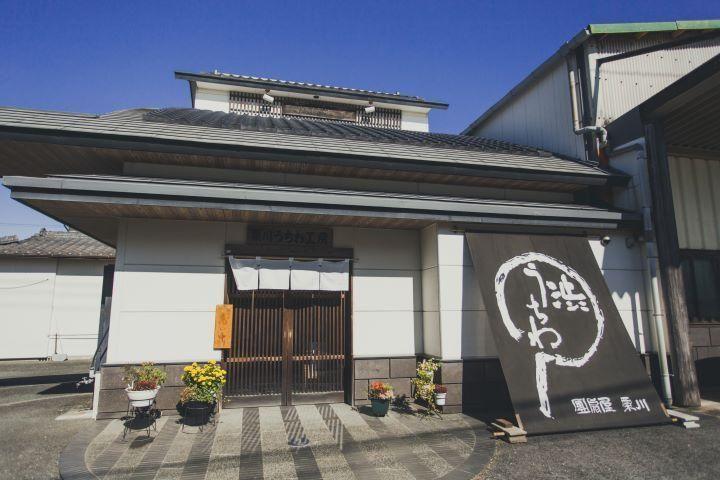
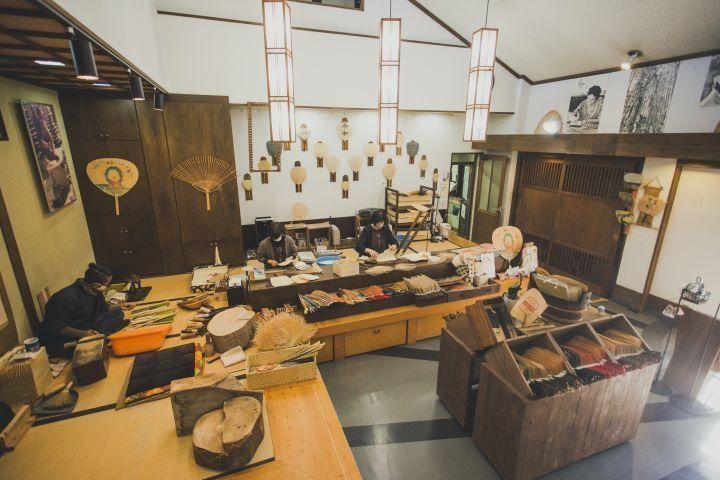
You can also watch the craftsmen’s Uchiwa fan-making technique at the Kamotomachi Kutami workshop.
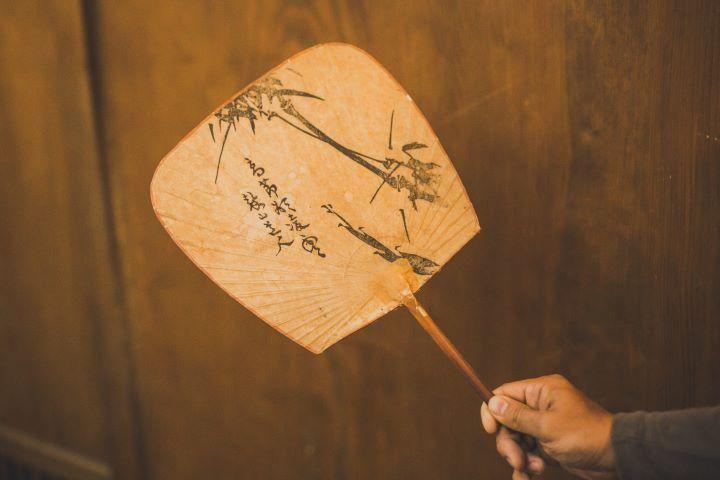
The oldest Shibu-Uchiwa fan in the workshop, made in 1929. Even though it was made about 90 years ago, the Japanese Washi paper and bamboo are still firm and can be used to fan the air.
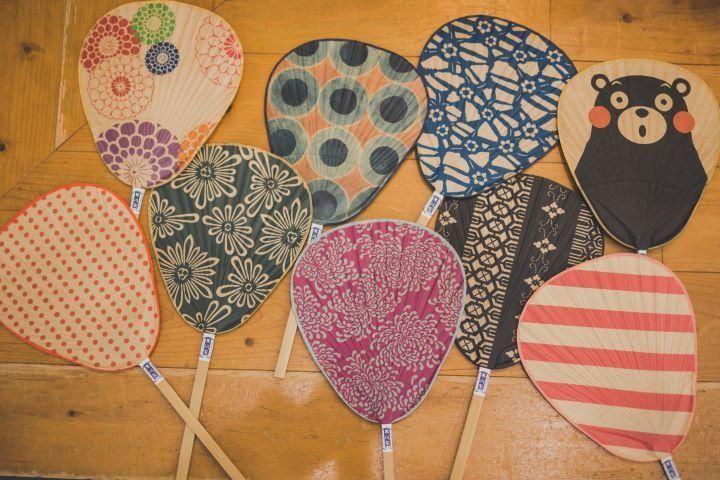
A Shibu-Uchiwa fan in the compact size of a Buddhist fan. The variety of colors and patterns is overwhelming.
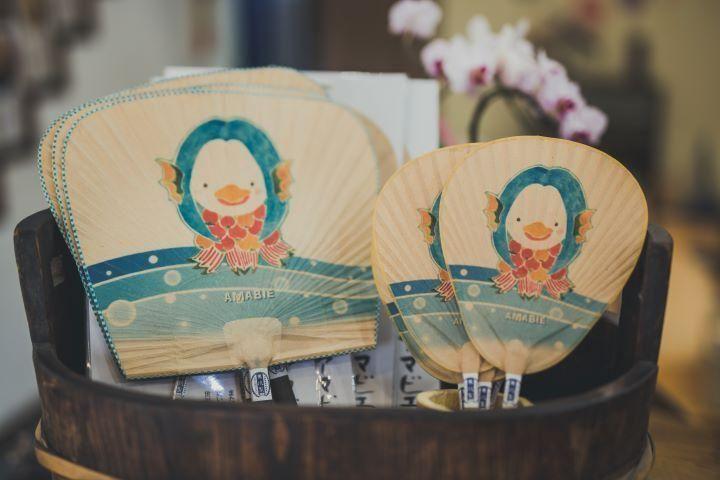
The Amabie series of Shibu-Uchiwa fans became very popular during the COVID-19 pandemic, mainly through online sales.
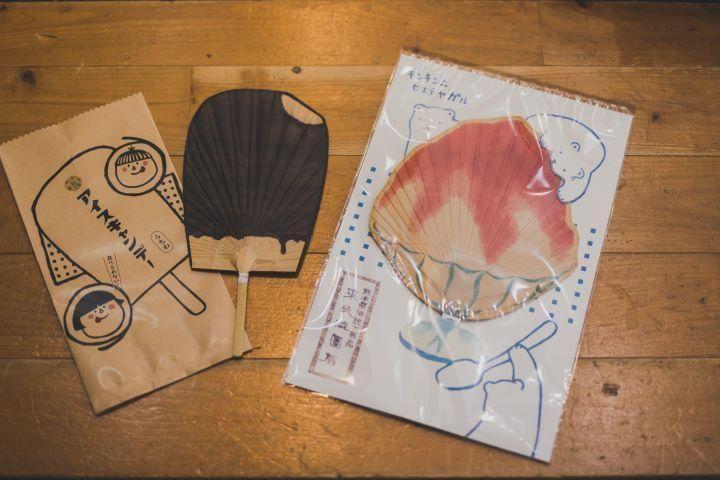
The unique series of Uchiwa fan that induces a cooling sensation just by looking is also popular.
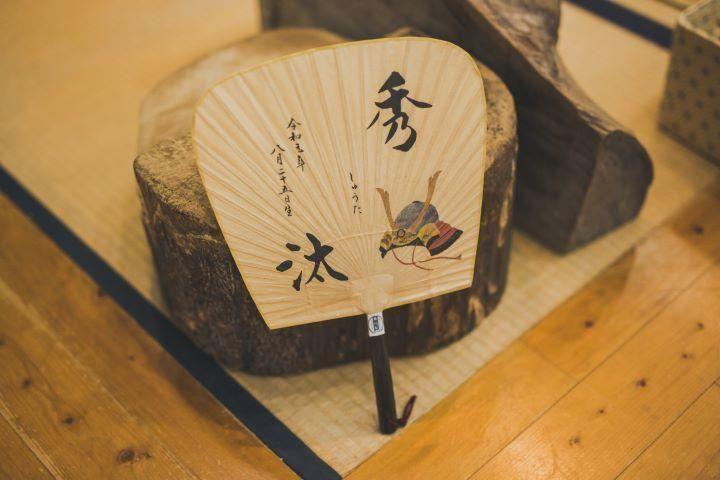
Given as gifts for new moms and to pray for longevity and health, naming Uchiwa fan is sure to watch over the child’s growth forever.
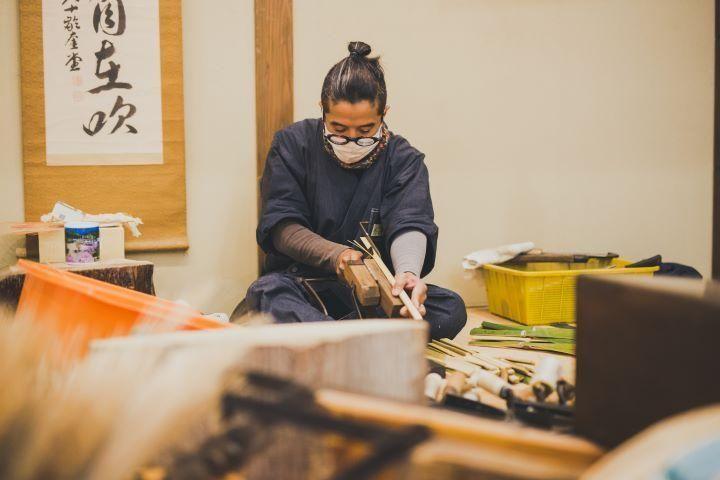
The craftsman splits the bamboo skillfully to make the frame.
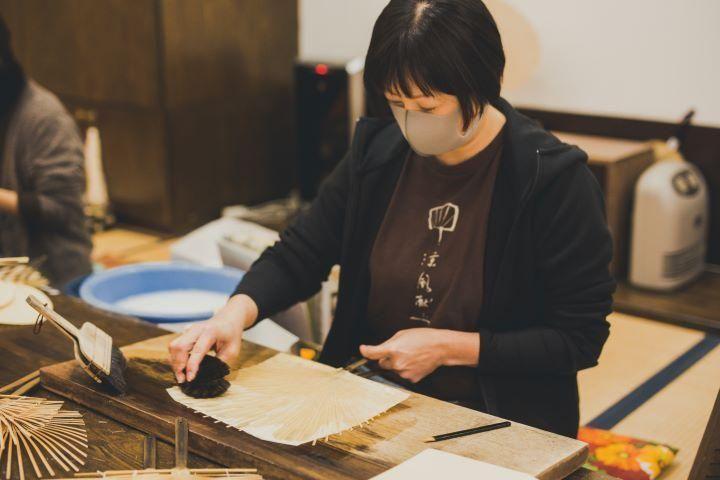
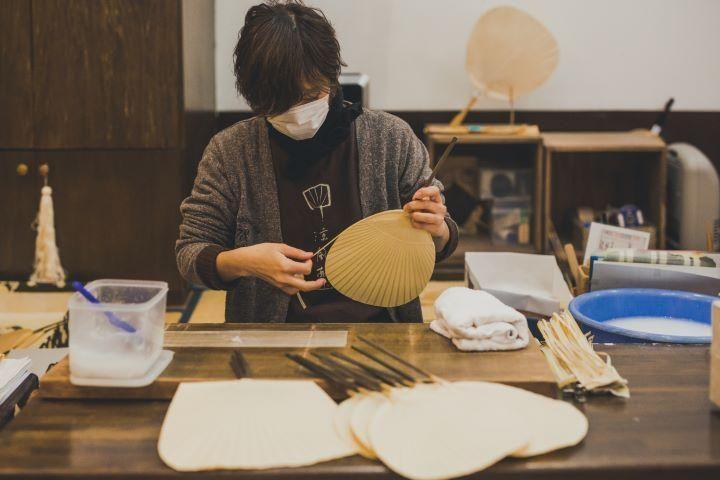
Japanese Washi paper is carefully applied one by one, cut out in the shape, and applied over the edges as well. Subsequently, they are hand-painted and tan-painted to complete the process. An amazing amount of time and effort goes into making the fans.
| Name | Uchiwa Fan Shop Kurikawa Shoten |
|---|---|
| Address |
1648 Kamotomachi Kutami, Yamaga City, Kumamoto Prefecture |
| TEL | 0968-46-2051 |
| Hours | 8:30〜17:30 |
| Holiday | Sunday and public holidays (Saturday, Sunday, and public holidays from January to March) *Open throughout April to August |
| Parking lot | Available |
| HP | Click here for their websiteSee here for「Uchiwa Fan Shop Kurikawa Shoten 」 website (external link) |
The modern, charming, and pleasing appearance of the Konohazaru from Konohazaru pottery. (Gyokuto town)
Konohazaru Kamamoto
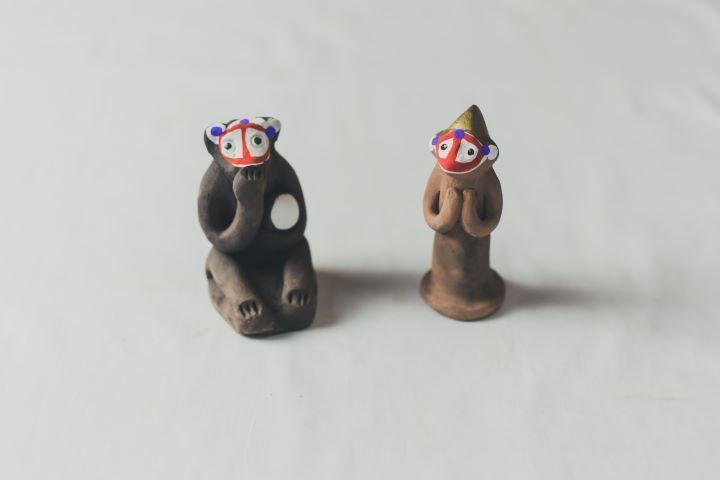
Konoha is located in Gyokuto town, Tamana-gun, bordering Kita ward of Kumamoto City. Here, we have long been making Konohazaru, cute pottery dolls in the shape of monkeys. It is said that Konohazaru was born from a legend about 1,300 years ago that says that a refugee from the capital living in the village of Konoha started enshrining Kasuga Daimyojin from Nara according to an old man who appeared in his dreams. When he made a ritual vessel from the red clay of Konohayama and threw away the remaining clay, it turned into a monkey. It gained popularity as souvenirs of the post town in the Edo period, and the record shows that they were chosen as the eastern Yokozuna (champion) in the National Customary Toy Listing, a ranking of souvenir toys from the whole country. However, today, only the seventh generation of Konohazaru pottery, Mr. Reizo Nagata and his wife Mrs. Eizuko, and the eighth generation, their daughter Ms. Sae Kawamata, have inherited Konohazaru.
Since all Konohazaru are made by hand, each one has a slightly different shape and expression. Above all, the simple and dull appearance and the shaded white, red, and blue colors and patterns are simply exquisite. This design has been passed down from generation to generation, but it still looks cute and modern, attracting renewed attention. People have been displaying the Konohazaru at doorways since ancient times and they have been treasured as a guardian deity that wards off thieves, disasters, and diseases, and brings prosperity to descendants. Many people buy them as souvenirs during the COVID-19 pandemic, hoping that they will protect their loved ones. Clay classes are also available by reservation.
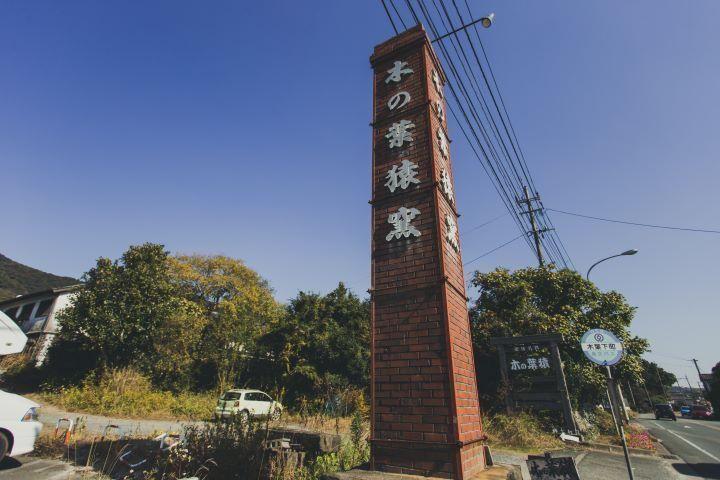
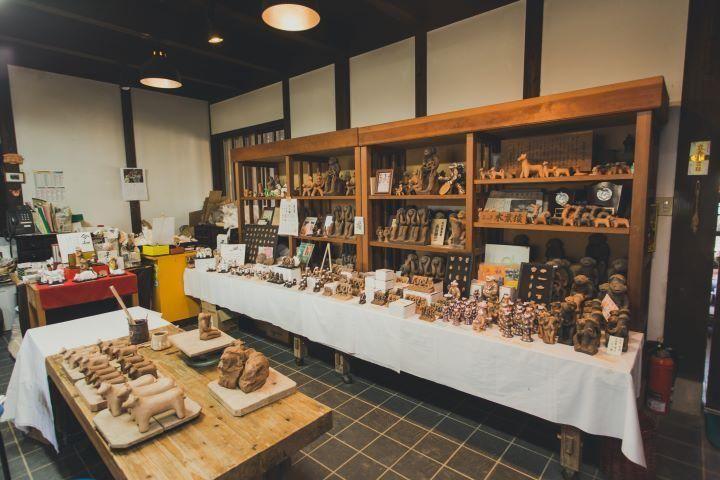
A large brick tower along National Route 208 serves as the landmark. Inside the workshop, there are various kinds of Konohazaru.

On the right is a Konohazaru that brings prosperity to descendants and happiness to marriages.
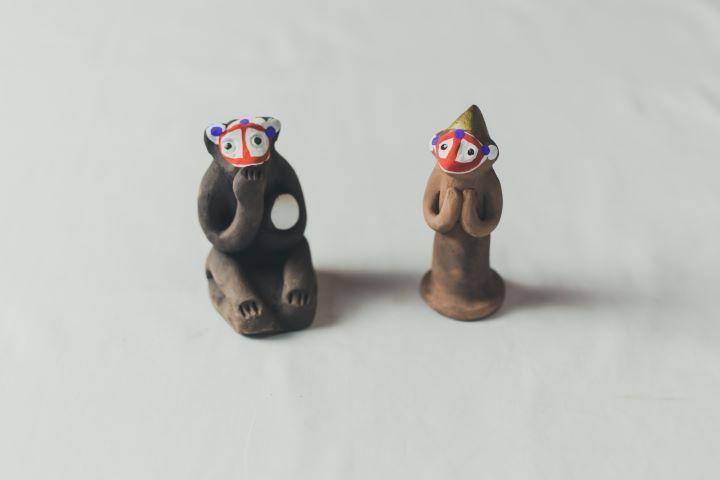
On the left is a Meshikuizaru (rice-eating monkey) that is filled with the wish to never run out of food. The Konohazaru on the right, with its hands clasped in prayer, is based on an old Konohazaru excavated from the ruins of an old mansion in the neighborhood.
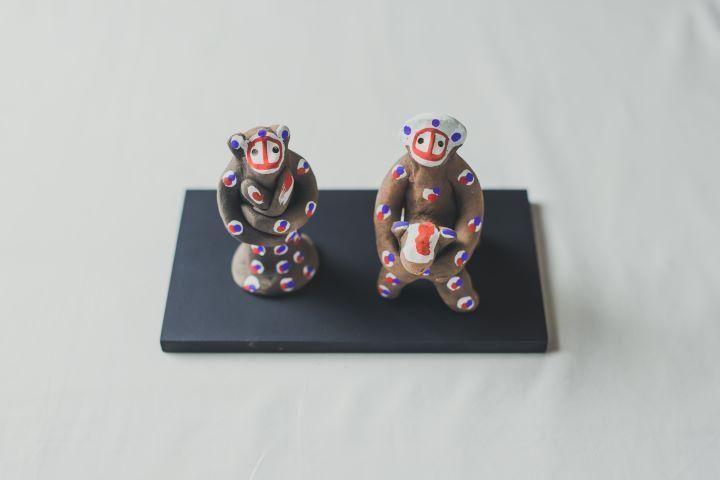
On the left is a Kodakizaru (child-hugging monkey) that brings prosperity to descendants, and on the right is a Umanorizaru (horse-riding monkey) whose appearance was depicted in an illustration of the Edo-period novel Nansō Satomi Hakkenden. The slight upward-looking, dazed facial expression is very cute.

Apart from the three wise monkeys (see no evil, speak no evil, and hear no evil) at the back center, there is also a selection of humorous design, such as the opposite three wise monkeys (see carefully, speak carefully, and hear carefully) at the right and the mini three wise monkeys at the front center. The four monkeys on the left in the photo are see no evil, speak no evil, hear no evil, and the last one being…?
*The store may close temporarily, and its business hours may change. Please check with the store directly for the business hours before your visit.
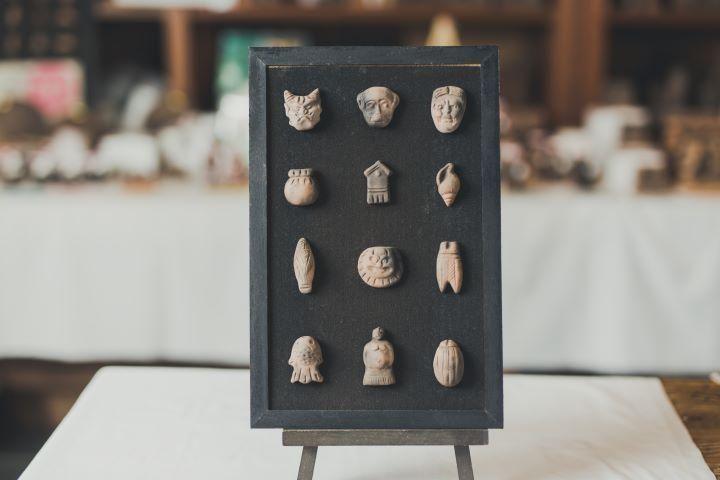
This is a frame of clay Menko, a card game that children used to play like Ohajiki in the late Edo period. The simplicity of unglazed pottery and the cuteness of the motifs are appealing.
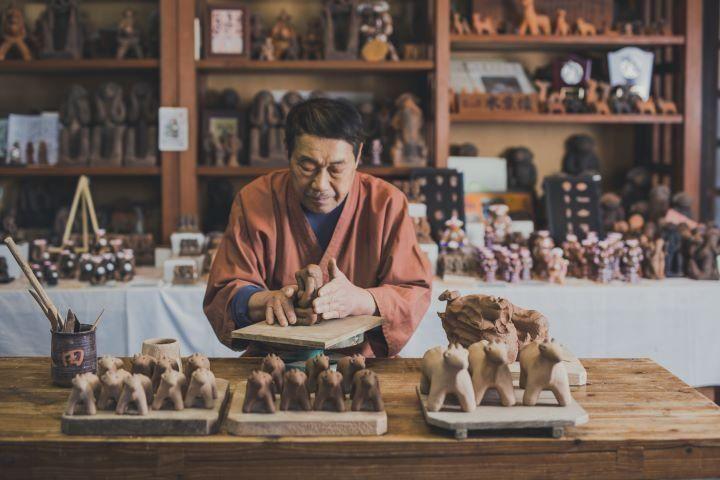
Mr. Reizo Nagata, the seventh generation, makes pottery of the Chinese zodiac at the end of every year.
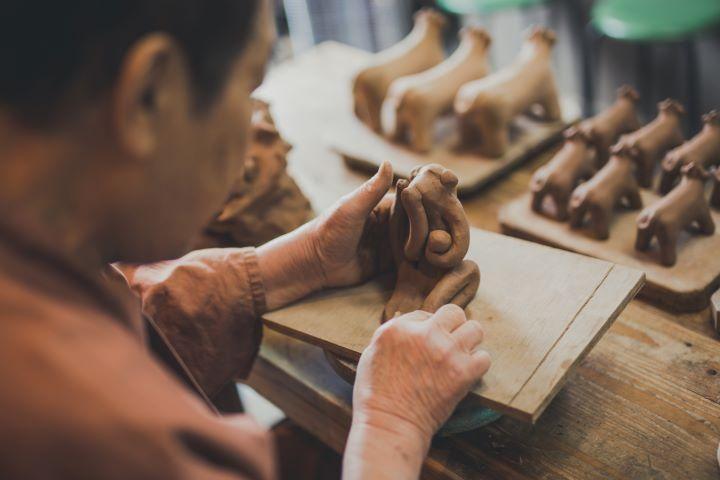
Every pottery is hand-made; despite sharing the same design, each will look slightly distinctive. It could be fun to find one of your likings.
Information
| Name | Konohazaru Kamamoto |
|---|---|
| Address | 60 Konoha, Gyokuto, Tamana-gun, Kumamoto Prefecture |
| TEL | 0968-85-2052 |
| hours | 8:00〜19:00 |
| Holiday | None |
| Parking lot | Available |
These cute crafts are made using techniques that have been passed down over a long period and possess a charm that warms your heart just by picking them up. They are all works that you would love to get not only as souvenirs and gifts but also for your daily use. Please visit the workshop and dive into the world of the crafts.
*The store may close temporarily, and its business hours may change. Please check with the store directly for the business hours before your visit.

Chiyomi Nakagawa
Born in Nagasaki, lives in Kumamoto. After working for a local publishing company, she set up the company Chiyomi Editing Office. She works on editing, writing, and planning for a wide range of genres, including local childcare magazines and lifestyle magazines. She spends her days running around Kumamoto and Kyushu based on her diet preferences, worldly desires, yearnings to go out, cravings for hot springs, and urge to drink beer. Her hobby is playing the erhu.
See All



